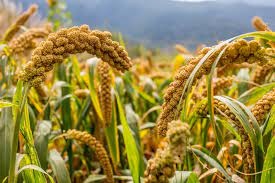Sundargarh: The state government’s millet mission aimed at addressing nutrition problems in people has struck a chord in Sundargarh district with over 16,000 farmers under 11 blocks taking up finger millet (ragi) cultivation on 3773.73 hectare of land, a report said.
Meanwhile, the district administration has started making preparation for purchase of ragi from the farmers as it announced to open mandis from January 3, 2022.
The mandis will be opened in all 11 blocks where the cultivation has been taken up. This time, the administration plans to purchase 13,612 quintals of ragi (mandia) through 142 mandis to be opened in these 11 blocks.
The mandis will operate till March 15 to purchase ragi from the registered farmers. The mandis are being opened to provide right price to the ragi farmers.
The district administration is sensitising farmers in all 11 blocks to selling their produce at the government-run mandis. The ragi to be purchased is meant for public distribution.
Malnutrition will be redressed through distribution of ragi laddus among kids studying in Anganwadi centres. The farmers have registered their names through Large Area Multipurpose Cooperative Societies (LAMPS) to sell their harvested ragi at mandis.
The farmers are also registering their names in the block agriculture office. The registration will conclude December 31. This year, the minimum support price for ragi has been fixed at Rs 3,377 per quintal.
In 2018, Sundargarh district was included in the nutrition map. In the first phase, ragi cultivation was taken up in four blocks — Kutra, Nuagaon, Kuanrmunda and Rajgangpur.
Later, the cultivation was taken up in Tangarpali, Hemgir, Lefripada and Balishankara blocks in 2020. In 2021-22, its cultivation was promoted in Gurundia, Lathkata and Lahunipada blocks.
As a result, the number of blocks where ragi and other nutrition-rich crops are cultivated went up to 11.
The funds for the purpose is being allocated from the district mineral foundation (DMF) while a tripartite agreement has been signed among the DMF authorities, the agriculture and farmers’ empowerment department and Agricultural Technology Management Agency (ATMA) at the DMF office.
PNN






































